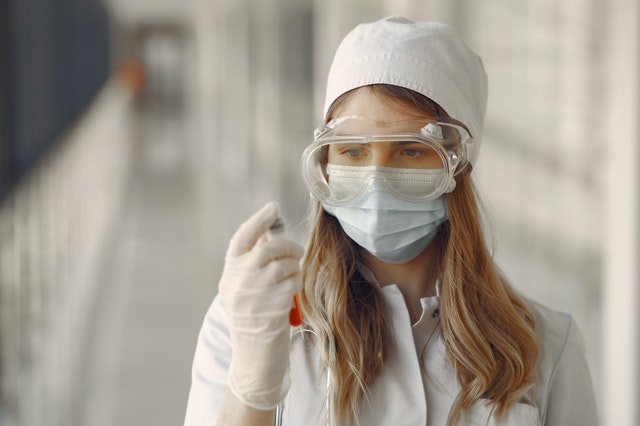Congratulations to the two winners, Mariane Pourchet and Jelle Verdonck, for their contributions!
SYSTEMATIC REVIEW OF BIOLOGICAL MONITORING DATA FROM OCCUPATIONAL EXPOSURE TO HEXAVALENT CHROMIUM
Jelle Verdonck is a PhD student in Mediacal Sciences at Catholic University of Leuven (KUL), in Leuven, Belgium. His PhD will focus on biomonitoring of chemical exposure in the workplace. He has degrees in mAster of Chemical Engineering and Advances Master of Safety Engineering and Advanced Master of Safety Engineering (option: prevention). After graduating as engineer from the Catholic University of Leuven and before starting his Phd, he worked as a laboratory technologist at the laboratory of environmental and occupational hygiene (Catholic University of Leuven, Belgium) See the poster here
DEVELOPMENT AND APPLICATION OF NON-TARGETED APPROACHES FOR CHARACTERIZING HUMAN INTERNAL EXPOSURE TO HALOGENATED CHEMICALS OF CONCERN.
Mariane Pourchet has a master’s degree in analytical chemistry and is a PhD student (2017-2020) in the Laboratoire d’Etude des Résidus et Contaminants dans les Aliments (LABERCA, Oniris-INRA, Nantes, France). Her PhD work is part of the HBM4EU project WP16 on Emerging Chemicals. In order to characterise human matrices (placenta, adipose tissue, breast milk, meconium, etc.) without a priori and to find new chemicals of emerging concern, she develops new methods, based on suspect and non-targeted approaches. She optimises the whole workflow from the sample preparation to data processing and compound identification. These large screening methods are increasingly developed in the human biomonitoring field to support risk assessment and to provide early warning support to policy. See the poster here
STRATEGIES FOR SUSPECT AND NON-TARGET SCREENING OF NEW EMERGING CHEMICALS IN HUMAN BIOMONITORING
Carolin Huber is a Ph.D. student at the Department of Effect-Directed Analysis at the Helmholtz Centre for Environmental Research (UFZ) in Leipzig. She is involved in the Human Biomonitoring Initiative project HMB4EU in work package 16 (Emerging Chemicals). Main focus of her work are the development and application of nontarget screening and suspect screening approaches of new emerging contaminants in urine via liquid/ gas chromatography coupled to high-resolution mass spectrometry and developing high throughput data analysis workflows for high performance computing. She studied Chemistry at the Freie Universität Berlin. She holds a Master in Environmental Toxicology and Chemistry from the Norwegian University of Science and Technology in Trondheim. She spent one semester term in Svalbard (Norwegian Arctic) focusing on Arctic research and got involved in several field studies. For her master thesis, she analyzed the impact of airborne inorganic contaminants in soil and plant samples from Svalbard, as well as analyzing polychlorinated biphenyls in soil samples. See the poster here
A REVIEW OF PHTHALATE PHARMACOKINETICS IN HUMAN AND RAT: WHAT FACTORS DRIVE PHTHALATE DISTRIBUTION AND PARTITIONING
Elena Domínguez-Romero is conducting postdoctoral research with Pr. Martin Scheringer, at the Research Centre for Toxic Compounds in the Environment (RECETOX, Masaryk University, Brno). She is part of the Pharmacokinetic modelling team at RECETOX. Her work is focused on pharmacokinetics and pharmacokinetic modelling of priority pollutants in the human being, which contributes to WP12 in HBM4EU. The work presented in the poster: “A review of phthalate pharmacokinetics in human and rat: what factors drive phthalate distribution and partitioning?”, by E. Domínguez-Romero and M. Scheringer, has been published in Drug Metabolism Reviews in 2019. See the poster here
IDENTIFICATION OF EMERGING CONTAMINANTS IN HUMAN URINE BY NON-TARGET SCREENING WITH LC-QTOFMS
Dr. Noelia Caballero-Casero graduated in Environmental Sciences from the University of Córdoba (Spain) in 2009. In 2010, she graduated as a master in Advanced Fine Chemistry, and she joined the Supramolecular Analytical Chemistry research group at the University of Córdoba. Since then and until her PhD dissertation entitle “Supramolecular Solvents with restricted access properties for the extraction of organic compounds”, she focused on the development of extraction methods for the determination of organic compounds in agri-food, environmental and biological matrices. She has conducted research stays at RIKILT-Institute (Netherlands) and Seoul National University (Republic of Korea); and collaborated with research groups from different areas, giving as result several peer-reviewed research articles and a patent. Currently, she is a post-doctoral researcher at the Toxicological Center, at the University of Antwerp. She is mainly focused on the identification of new contaminants and their metabolites in biological samples, through the use of high-performance liquid chromatography and mass spectrometry. See the poster here
BIOMONITORING OF POLYCYCLIC AROMATIC HYDROCARBONS IN LACTATING MOTHERS: URINARY LEVELS AND RISK ASSESSMENT & BIOMONITORING OF NON-PERSISTENT PESTICIDES IN URINE FROM LACTATING MOTHERS: EXPOSURE AND RISK ASSESSMENT (Pardo & Fernández) & BIOMONITORING OF URINARY PHTHALATE BIOMARKERS IN LACTATING WOMEN (Pardo)
Olga Pardo holds a degree in Chemistry and Food Science and Technology, PhD in Chemistry, University of Valencia. Researcher in the Food Safety Area of FISABIO-Public Health, and professor in the Analytical Chemistry and the Preventive Medicine and Public Health, Food Sciences, Toxicology and Forensic Medicine Departments, University of Valencia. Involved in FISABIO projects related with biomonitoring: BETTERMILK (lactating mothers), IRRILIFE and PERFECT-LIFE (pesticide applicators) and BIOVAL and CIPAV (children) and now in the frame of the HBM4EU project, participating in the WP9, in SPECIMEn study about pesticide mixtures (WP15) and in the screening analysis of pesticide mixtures (WP16). See the posters here, here and here
Sandra Fernández Fernández is a PhD student in the Doctoral Programme of Experimental Techniques (University of Valencia, Spain) in the Foundation for the Promotion of Health and Biomedical Research of Valencia Region (FISABIO). My research project is about “Environmental and dietary risk assessment for exposure of contaminants and residues”. I am involved in the SPECIMEn study about pesticide mixtures (WP15) in the frame of the HBM4EU project. I have a Master’s degree in Experimental Techniques (2016) and a Degree in Chemistry (2015) by the University of Valencia (Spain). I worked as a laboratory technician in the Public Health Laboratory of Valencia between 2017 and 2018. I have participated in two biomonitoring studies from the Valencia Region: BETTERMILK (lactating mothers) and BIOVAL (children). See the posters here and here
DIETARY INTAKE OF ACRYLAMIDE AND RISK OF BREAST, ENDOMETRIAL AND OVARIAN CANCER: A SYSTEMATIC REVIEW AND DOSE-RESPONSE META-ANALYSIS & CADMIUM EXPOSURE AND RISK OF BREAST CANCER: A DOSE-RESPONSE META-ANALYSIS OF COHORT STUDIES
Dr. Filippini, MD, is a Researcher and a PhD student in Public Health at the University of Modena and Reggio Emilia. He works in the study of health effects of environmental risk factors, particularly dietary risk factors and outdoor pollutants, with specific reference to risk of chronic diseases such as cancer and neurodegenerative diseases. The major research interests and activities are on the health effects of environmental and nutritional chemicals, including manganese, potassium, selenium, heavy metals (i.e. cadmium, lead, mercury) and persistent organic pollutants. See the poster here and here
IMPLEMENTATION OF ALIGNMENT STUDY IN CROATIA – ISSUES IN CONDUCTING A RESEARCH PROJECT
Lovro Bucić, MD, Croatian Institute of Public Health. Epidemiology resident with 3 years working experience in health sector. Placed at Environmental Health Department. Involved in several 3rd Health Programme and other projects; Joint Action Healthy Gateways, HBM4EU, COST Damocles. Main fields of interests include climate change and air pollution health impacts, vector borne diseases control and human biomonitoring. See the poster here
Disclaimer
The HBM4EU project was launched in 2016 with the aim of improving the collective understanding of human exposure to hazardous chemicals and developing HBM as an exposure assessment method. The project had €74m in funding and jointly implemented by 120 partners from 28 participating countries – 24 EU member states plus Norway, Switzerland, Iceland and Israel and the European Environment Agency. One of its aims was to ensure the sustainability of HBM in the EU beyond 2021. The project ended in June 2022. The website will not be updated any longer, except the page on peer reviewed publications, but will be online until 2032.


